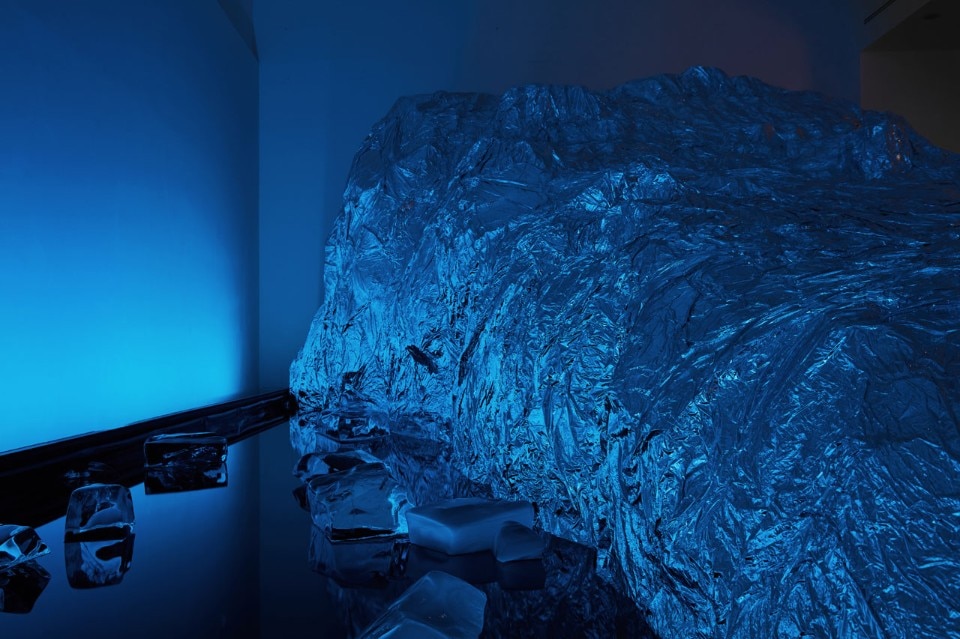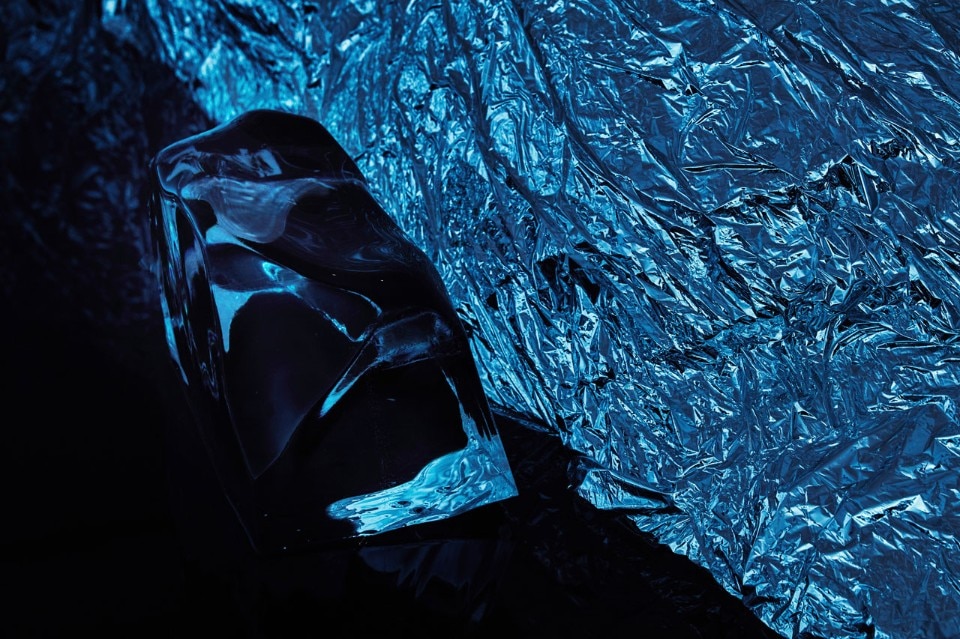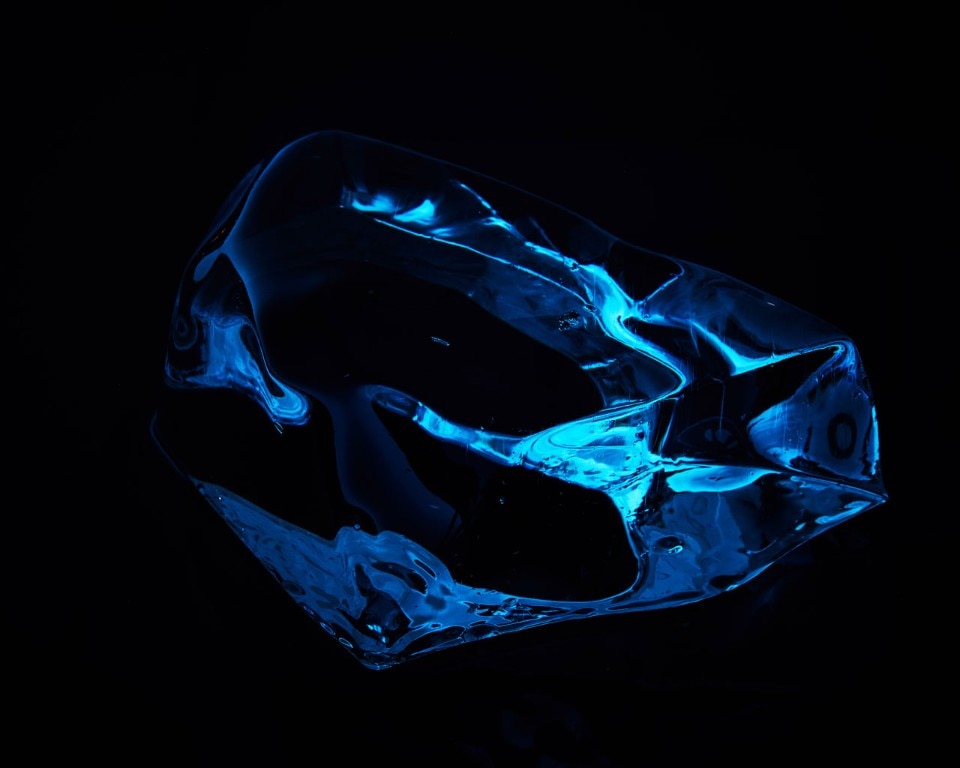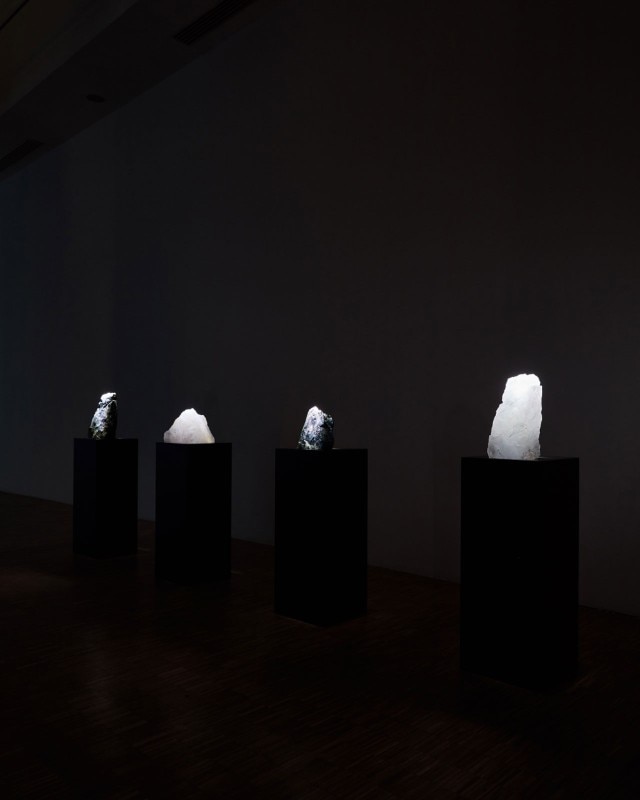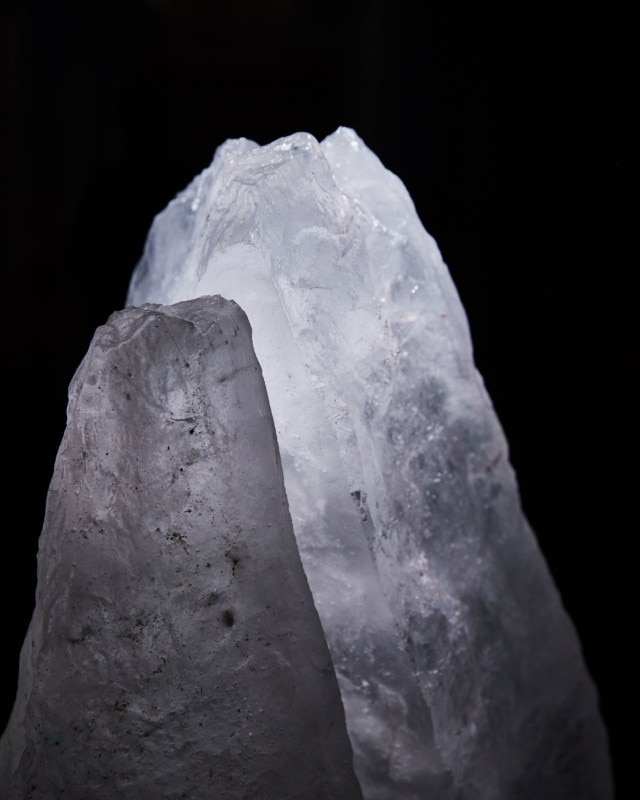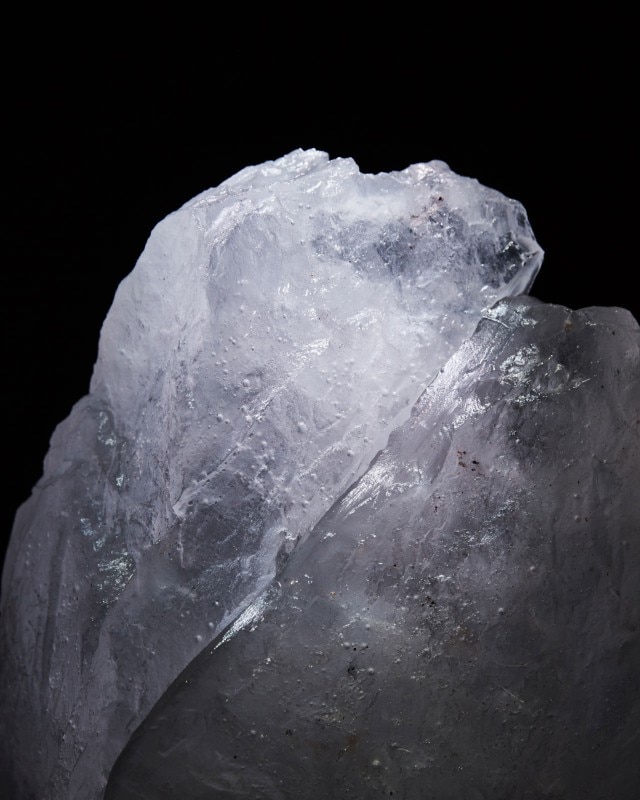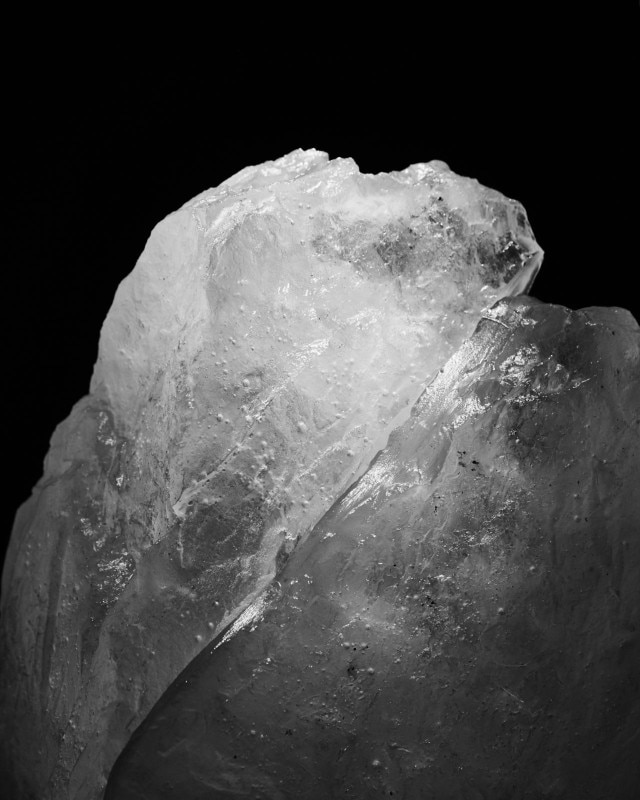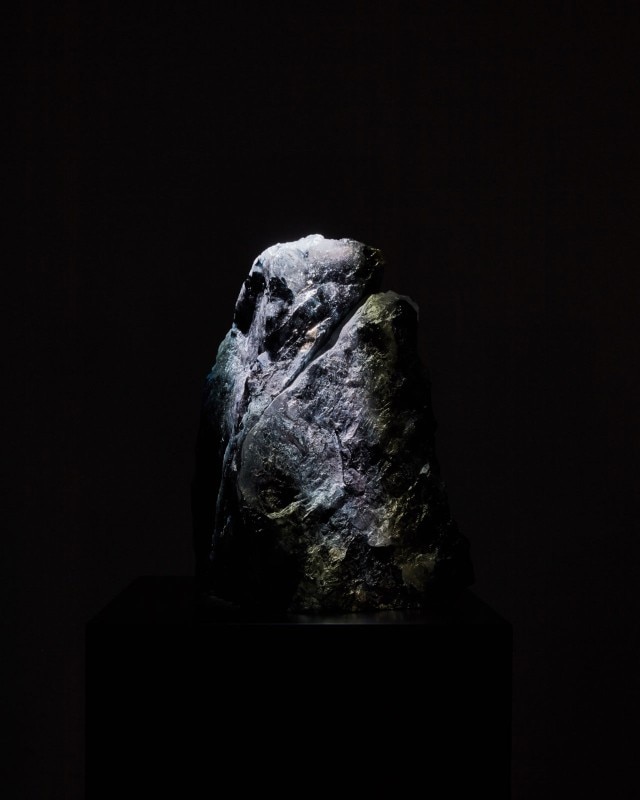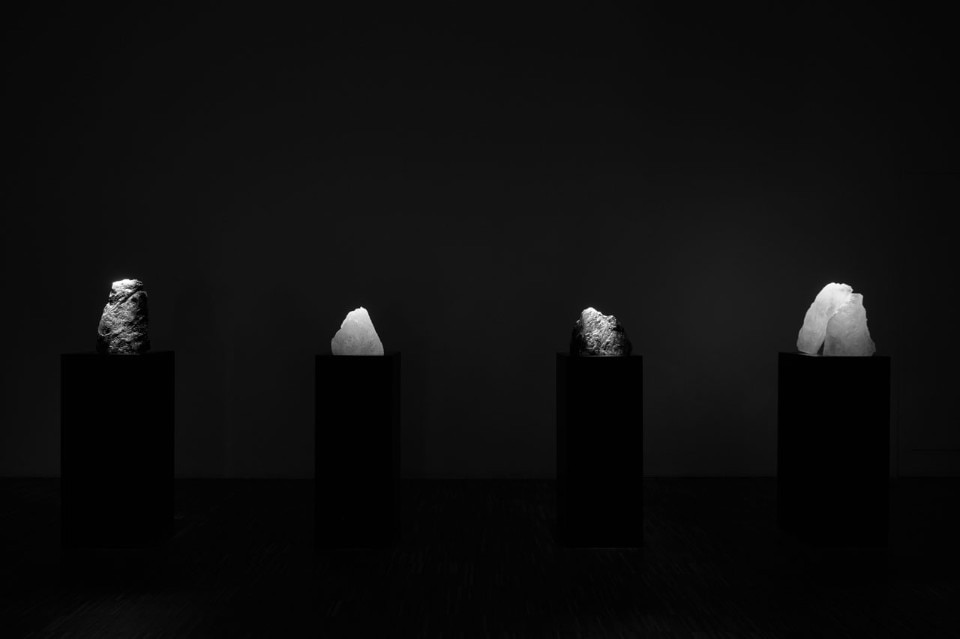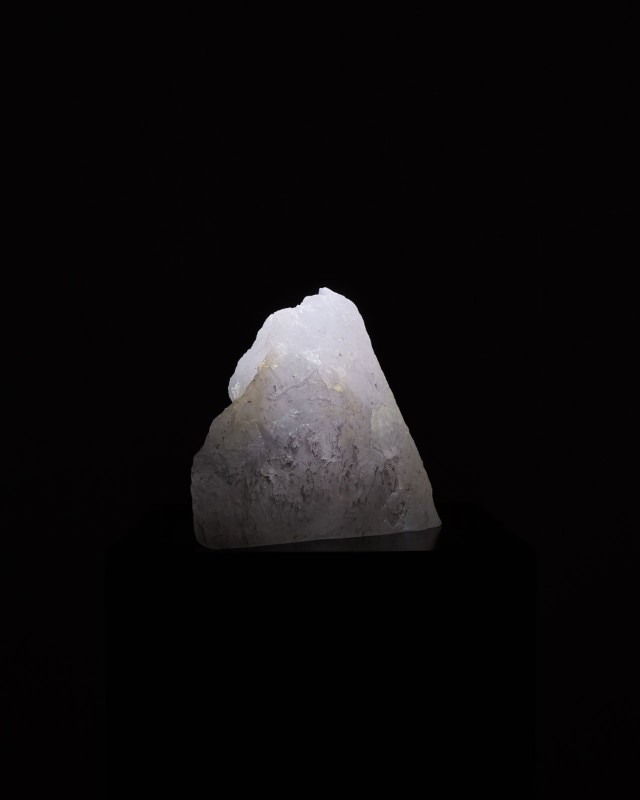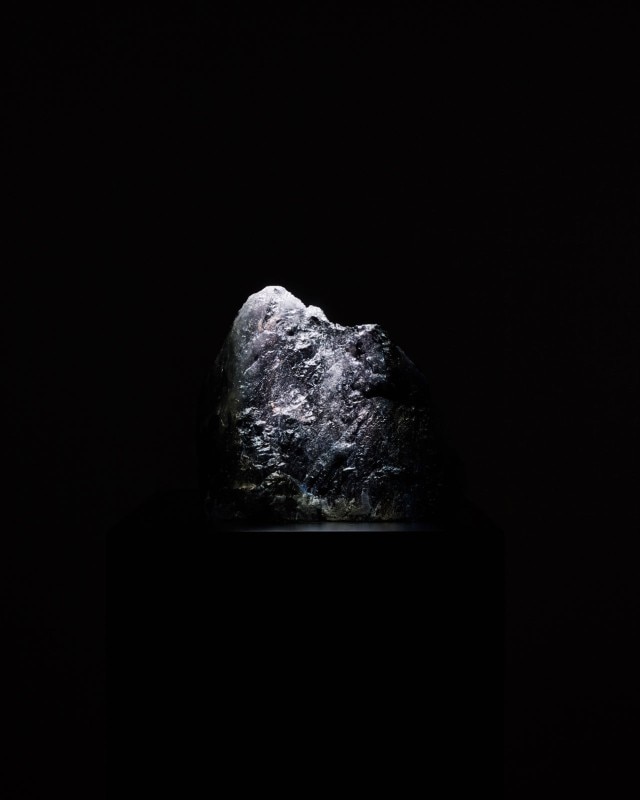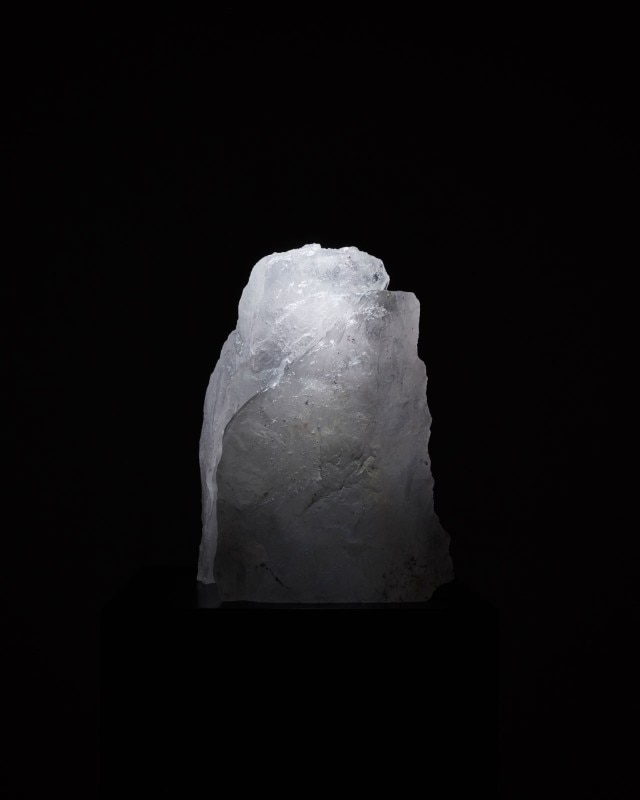“Black light, white light”, Michel Comte’s exhibition at the Triennale di Milano, appears enveloped in the darkness of a still moonlit night. Behind a partition net visitors catch sight of the installation’s central section, an ice chunk floating in a pool of water surrounded by a constellation of tinier icebergs. In well over a week it has already lost most of its consistency and has turned into water, that is, what will inevitably remain when the exhibition closes on 1 January.
For around the past ten years this has been the main concern of Comte — a photographer born in Zurich in 1954, best known for his outstanding work in fashion and portraiture (the Triennale already held a solo show of his in 2011): the theme of desertification and glacier melting. Actually, it all began years ago, and can be traced back to his family: his grandfather Alfred was an aviation pioneer who, after crossing Switzerland in the summer in the early 1900s, returned home with aerial photographs of snowy mountaintops: “They were all white, back then,” the photographer remembers. “Today there’s snow only a few days a year, even on Kilimanjaro, and the west face of the K2 looks totally black.”
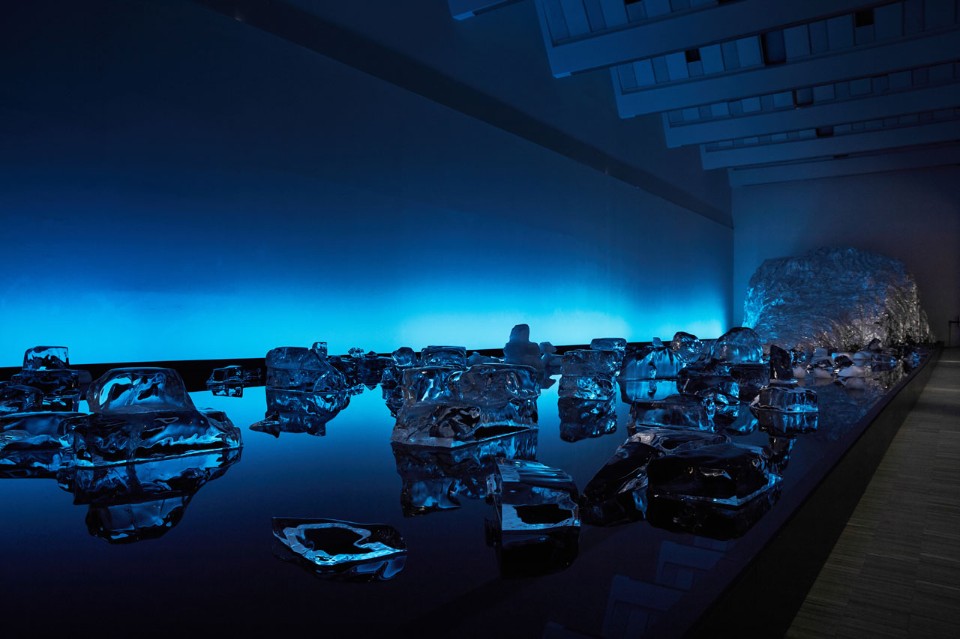
A lover of mountain climbing, Comte visited the same mountaintops on various occasions, taking pictures of wonderful landscapes, shimmering details in the remotest and most hidden locations on the planet, while also gathering proof of the devastation underway due to climate change: “Traditional scientific literature states that the glaciers are shrinking 30 cm every year. But that’s no longer the case: you don’t have to go far, just head for the Roseg, near Sant Moritz, to see where the ice reached just one year ago, there are markers: it shrank 4 kilometres”. This documentation is gathered in a fascinating book titled Light, published in May by Steidl, which accompanies a traveling multimedia exhibition that began at MAXXI in Rome in November and will continue, after the Triennale, to Hong Kong, Beijing, and the Mojave desert with a monumental site-specific intervention inspired by “Land Art”. It’s no coincidence that the photographer chose the desert of Nevada, where the story of Land Art began and where in the late 1960s the artist Michael Heizer created his best-known work, an enormous trench in the earth called Double Negative. At the time it seemed like a rebellion against the hegemony of galleries: those works sculpted in the womb of the earth couldn’t be hung on walls over sofas. Moreover, it was a period when environmental movements began drawing attention in society and became for the first time of social interest.
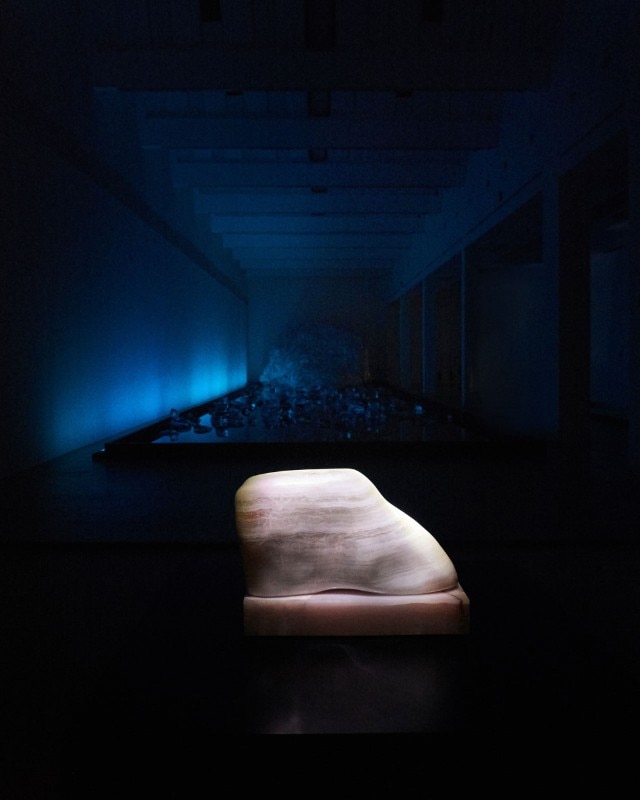
At the Triennale Michel Comte has installed with rigorous elegance images of erosion and has scattered debris collected throughout the itinerary alongside miniature glass glacier replicas. He overlooks all realism or aesthetics. Actually, the exhibition simply aims to convey an urgent message: “It’s an attempt to symbolically narrate what’s going on. It’s really not about putting a block of ice in a museum, but making people understand”. The work has caught the attention of the WWF who decided to join the project right at the moment it was launching its pre-Christmas campaign — “Planet is calling” — a warning as this annus horribilis comes to an end, in the face of floods, hurricanes, reduced snowfall, smaller ice caps, shrinking coral reefs, and other irreversible phenomena whose effects lead to humanitarian crises and mass migration.
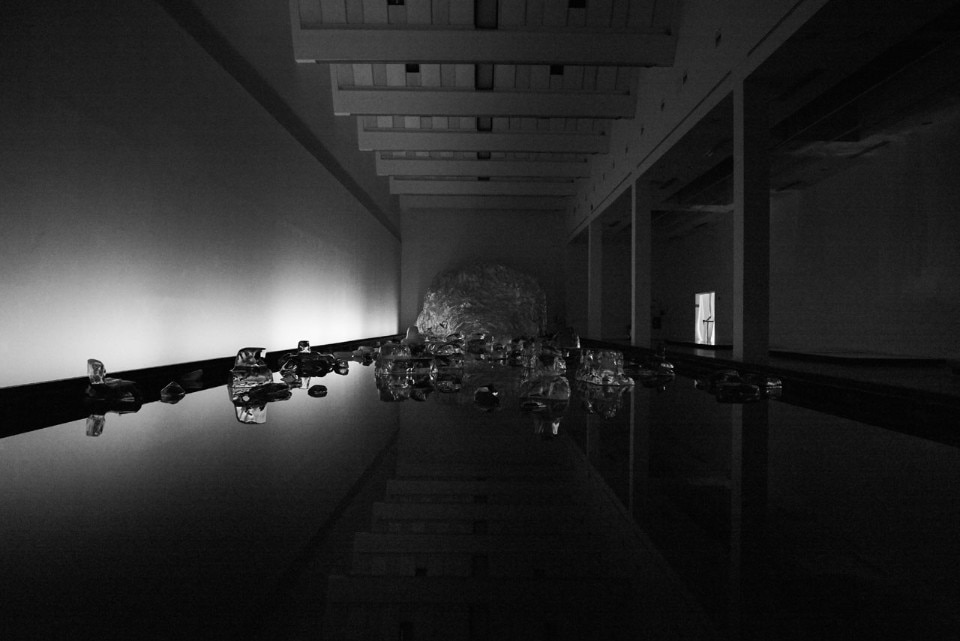
Yet if today Comte seems to be a militant artist, it must be said that his intuition was precocious. In 1975, he wrote his graduation thesis on growth limits, titled “L’acqua è l’olio del futuro” (Water is the oil of the future), for which he was invited to The Club of Rome (NGO on environmental issues) to discuss with OPEC members this issue which at the time was in no way considered alarming since water was believed to be a non-perishable resource. But in 1986, during a long journey to Tibet, he came across the monastery of Kumbum and a group of Chinese scientists. “They said they weren’t there for the Dalai Lama, or for religion. Their only interest was water: they believed that by 2020 China would be faced with a major water crisis — which is what is actually happening today — and for them the Tibetan plateau was their country’s water source for the future”.
Comte states he searched “all around” in an attempt to display his own project, a manifesto of a new awareness acquired before many others. But this year something has changed, perhaps also due to Donald Trump’s decision to withdraw from the Paris climate accord, which contributed to bringing this debate to the centre of media attention. This context is quite different from the one we are used to with Comte, easily associated with the rarefied constellation of celebrities who came across his camera lens, while in parallel he was engaged in expeditions to war zones for the Red Cross or Amnesty International. “I lost count of the number of mountaintops I’ve climbed and the hours I’ve spent clinging onto a helicopter with the door wide open and my camera in hand,” he states. “It may seem quite glamorous, but it’s not, it’s almost like going to war”. In the quiet darkness of the room, at the Triennale, as visitors barely perceive the sound of ice melting in the tank, Comte makes a comparison to crying whales. But he has faith in the consciences of people, in new technologies, and in the fact that, even though there’s no turning back, something can indeed be done, for the better.
- Exhibition title:
- Michel Comte. Black light, white light
- Opening dates:
- 28 November 2017 – 1 January 2018
- Curator:
- Jens Remes
- Exhibition venue:
- Triennale di Milano
- Address:
- viale Alemagna 6, Milano


